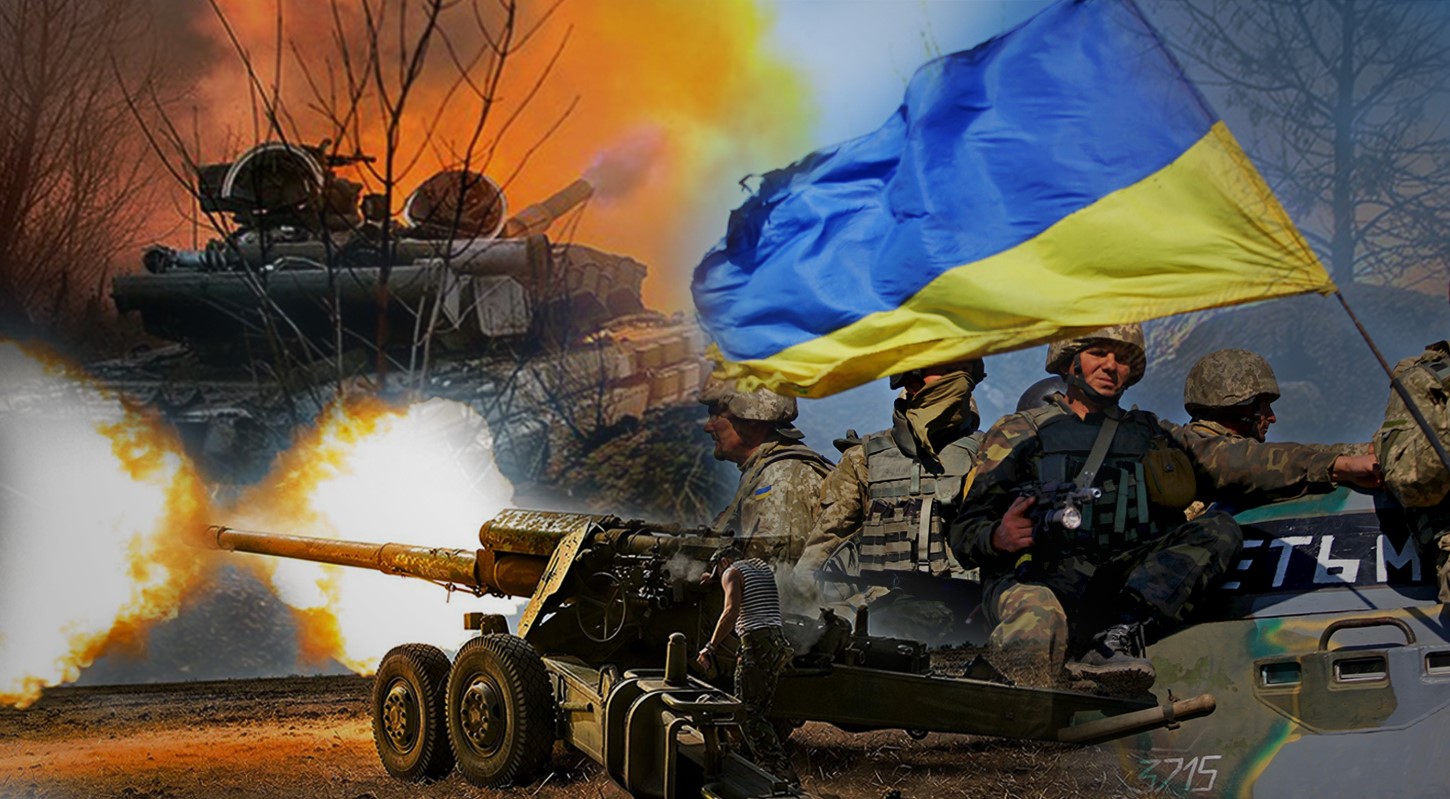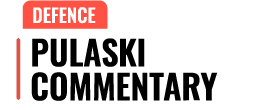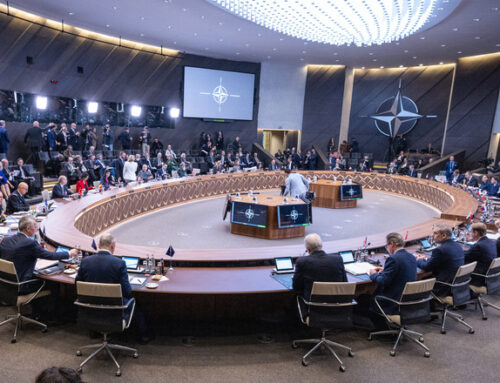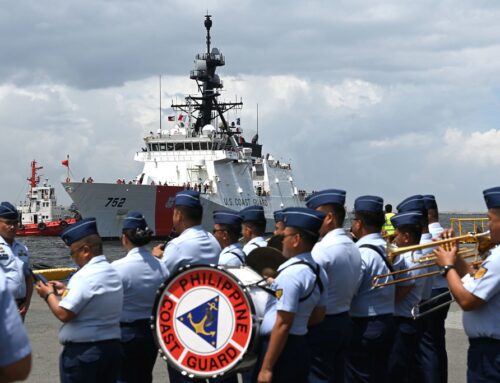War in Ukraine – weekly update (25.02-03.03.2023)
Autor foto: Domena publiczna



War in Ukraine – weekly update (25.02-03.03.2023)
Autor foto: Domena publiczna
War in Ukraine – weekly update (17.04-21.04.2023)
Autor: Sebastian Czub
Opublikowano: 21 kwietnia, 2023
Bakhmut
The decreased pace of Russian advance in Bakhmut may be indicative of the nature of Ukrainian defence of the city. It is possible that the high pace of Russian advance two weeks ago, that is when Bakhmut city centre was captured by Russians along the entirety of Bakhmut east of the railway, may have been caused by an organised fighting withdrawal conducted by Ukrainian forces. The previous Ukrainian line of defence was based on the Bakhmutka river, effectively minimising the amount of Russian forces that could effectively assault Ukrainian positions. This allowed the outnumbered defenders to even the odds. However, faced with encroaching forces from the north and south, and increasing number of Russian beachheads on the west side of the river, paid for in blood, put Ukrainian defenders in an extremely precarious position and a potential encirclement scenario within the city centre. Thus in order to minimise losses and maintain the defence effort, Ukrainians troops might have chosen to transfer to the next defensive line based on the railway.
The long empty strip of land that houses the railway would serve similarly to the Bakhmutka river – forcing Russians troops to cross a very open and dangerous obstacle at the cost of many lives. This approach seems to be working as the pace of Russian advance in the city has decreased significantly. However, similarly to the case of the Bakhmutka defence line, the combined pressure on Ukrainian flanks, along with even small Russian beachheads across the railway could lead to the collapse of this supposed last line of defence. As of now Russian forces have been applying heavy pressure on Ukrainian flanks in the northern and southern parts of the city, achieving noticeable gains. At the same time Russian assaults on the Ukrainian last ground line of communication through Khromove have been amplified, with some gains visible. According to some reports the road through Khromove is now in the range of Russian small arms fire. If true, then this road might be no longer passable. This would in turn mean that Ukrainian forces can now only rely on small country roads, and cross country travel to supply and evacuate their troops in Bakhmut – which is both ineffective and potentially catastrophic if another organised retreat will have to take place. It is possible that some of Ukrainian troops in Bakhmut could be cut off in Bakhmut.
Avdiivka
While the situation in Avdiivka remains difficult, Zelensky’s recent visit to the city might be indicative of an improving situation. This week several pieces of footage were released showing Ukrainian President Volodymyr Zlelensky visiting soldiers stationed in Avdiivka sometime around Easter.[i] This visit, while still incredibly dangerous, might indicate the frontlines around the city have been somewhat stabilised by the Ukrainian forces. This can be supported by the seeming lack of Russian advances in the area, as Russian troops continuously struggle to cut off the remaining supply line to the besieged city. The last ground of communication is still passable however, Russian forces hold positions as close as 2,5 kilometres away. Additionally, Russian forces have secured further gains north of Avdiivka in the direction of Novokalynove, thus deepening the envelopment manoeuvre. Furthermore, civilian personnel, that is journalists, volunteers and others, are still banned from entering Avdiivka, due to the difficult situation in the city. Thus, while Zelensky’s visit might instil some hope the situation in the Avdiivka remains to be difficult and potentially dangerous for Ukrainian forces in the region.
Zaporizhia and Kherson
Russian officials in Zaporizhia Oblast have been debating the direction of the upcoming Ukrainian counteroffensive. For the last several weeks Russian forces have been continuously reinforcing the frontlines in Zaporizhia, creating a 120km long fortified defence line. However, recently discussions have shifted to a possible Ukrainian offensive in the Kherson Oblast with Russian officials stating that Ukrainians have massed significant forces on the west bank of the Dnieper River. Russian sources have further speculated that Ukrainians might be preparing to launch an amphibious assault across the river.[ii] These speculations might have been fuelled by the several insertions of Ukrainian special forces onto the Dnieper islands and territories held by Russians on the east bank. Additionally, for the last two weeks a number of videos and other pieces of footage have been circulating online showing Ukrainian forces heavily training water crossings, using amphibious armoured vehicles, like the BMP-1 and the modified Polish version BWP-1. The apparent quiet of the Ukrainian command and official sources about the Kherson direction, and the grand promotional campaign of the Zaporizhia offensive across social media, might suggest a Ukrainian informational campaign aiming to draw attention away from the Kherson region. This could be potentially indicative of a major Ukrainian operation in the region.
Russian Homefront
Russia continues to conduct activities across the country in an effort to support its war effort. Russian Defence Minister Shoigu has continued his streak of visits and inspections of Russian military production companies. This week Shoigu arrived at a manufacturing plant in Kaluga Oblast that specialises in electronic warfare equipment, and discussed the need to increase production.[iii] Russia has been losing a relatively large number of electronic warfare equipment in Ukraine, thus this visit might be an attempt to patch the growing equipment shortages. Additionally, several pieces of footage have been posted by Russian sources, showcasing, presumably, the ongoing production efforts of the Russian military industry. Uralvagonzavod has showcased refurbishing and repair efforts of stored T72 tanks at their production plant, with the “new” tanks being sent to the front. Another video shows dozens of factory new BMP-3 produced by Kurganmashzavod, another industry enterprise, being loaded and transported by railway.[iv] The deliveries of new equipment might serve Russia to reinforce and replenish losses sustained during the key battles for Bakhmut and Avdiivka.
This week, President Vladimir Putin and Defence Minister Shoigu have met with newly appointed Chinese Defence Minister Li Shangfu. The trip to Russia has been the first overseas visit undertaken by the defence minister since his appointment, as stated by Li he chose Russia specifically “in order to emphasise the special nature and strategic importance of our bilateral ties”.[v] The visit served to strengthen the military and strategic cooperation between the two countries. This could have been done as a show of strength and solidarity by China as a follow up to last month’s visit by Xi Jinping. Xi Jinping’s visit has been widely received by the West as not particularly successful for neither China nor Russia, with no important announcements or deals brokered. On the other hand, the visit might have also been caused to an extent by the supposed leak of classified US documents, which state that China has agreed to provide Russia with lethal military equipment.[vi] In this case the visit might have served to further discuss the issue between the two countries, either to facilitate the transfer of weapons and to maintain the secrecy of such actions. While the true effects, and intentions of Li’s visit might be unknown it shows clearly that China continues and will continue to support Russia.
The grain deals
The grain deals began in 2022 as an effort to facilitate the transport of Ukrainian grain out of the war torn country to prevent famine in countries reliant on Ukrainian deliveries. The grand debate on the topic culminated with the United Nations Black Sea Grain Initiative, signed in Istanbul, which brokered an agreement between Ukraine and Russia on safe and unbothered transport of grain and other food products to countries affected by the war caused shortages.[vii] The plan is implemented by the mediation of UN and Turkish officials and experts, who along with their Ukrainian and Russian counterparts oversee the transports. In addition to this, the European Union passed laws to facilitate the transport of Ukrainian products, mainly grain, through the EU, in order to maintain a steady supply to the countries in need of them.
These agreements have worked fairly well for many months, however recently several EU countries, namely Poland, Slovakia, and Hungary, have imposed bans on the transport of Ukrainian products. Slovakia bases their ban on the supposed detection of EU banned pesticides in grain, while Hungary uses the ban to exert political pressure on the EU. The Polish ban is a bit more tumultuous. As Poland is the major logistic hub for Ukrainian products coming into the EU, the ban severely hampers the ability to transport these products further, effectively locking them in Ukraine, which might lead to serious consequences. The ban itself was introduced due to ongoing protests and strikes of Polish farmers, who argued that the cheaper Ukrainian grain was undercutting them, leading to major loss in profits. Additionally, some of the Ukrainian grain was entering the market illegally, as it was labelled and sold as “technical” grain used for further production or as fuel, while in reality it was sold as food products to major Polish food companies.[viii] Some experts have stated that the label “technical grain” was invented ad hoc to bypass strict EU regulations on food products, thus allowing the grain to be swiftly and cheaply distributed on the Polish market. The ban imposed by the Polish government was probably meant to achieve two things. Firstly it granted the government time to properly address the issue while calling the public outrage, which it did. Several days later the ban was lifted as Polish officials met with an Ukrainian delegation and came to an agreement, which imposes strict control and overview on all Ukrainian food products, mainly grain, with special tracking beacons being installed on all Ukrainian transports.[ix] Secondly, the Polish government wanted to appease Polish farmers, in order to secure their votes in the upcoming parliamentary election, as without their support the ruling party might lose.[x] The ban was a result of internal Polish disputes, which were swiftly tackled and even used by the Polish government to improve its image. The withdrawal of the Polish ban might result in the lifting of the remaining bans in the coming days.
Western Deliveries
The deliveries of Western aid to Ukraine continue. This week provided solid proof for the presence of new western gear in the hands of the armed forces of Ukraine. Polish PT-91 “Twardy” tanks, have been spotted during manoeuvre exercises in Ukraine, in total up to 60 of these vehicles were pledged to be delivered to Ukraine. US made Bradley IFVs have also been spotted during training with the Slovenian M-55S tanks (a modified and upgraded version of the T-55). The multiple pieces of footage showing these vehicles in training might indicate that they could take part in the upcoming Ukrainian counteroffensive.
Additionally, this week further aid packages and equipment deliveries were confirmed. Slovakia has announced that the transfer of the previously pledged 13 MiG-29 fighter jets has been completed.[xi] Germany has also confirmed that the promised PATRIOT and IRIS-T air defence systems have been delivered to Ukraine, a key step as Ukrainian Defence Minister Reznikov has recently declared the need to strengthen Ukrainian air defence capabilities.[xii] Denmark and the Netherlands have also announced a joint effort to deliver 14 factory new Leopard 2 tanks to Ukraine, it is possible that these vehicles will be one of the newer variants, possibly the 2A6 or better, however these will only be delivered in early 2024. In the meantime Denmark continues to work on the promised Leopard 1 tanks which are bound to arrive much sooner and in much greater numbers – up to 100 vehicles with the first ready by summer.[xiii] The US has also unveiled another mighty aid package worth 325 million USD. The package consists mostly of ammunition, with 155mm and 105mm artillery rounds, HIMARS rockets, 9 million rounds of small arms ammunition, as well as AT-4 anti armour weapon systems, and TOW missiles.[xiv] The most interesting bit however, is the inclusion of demolition munitions for obstacle clearing, these could be potentially used against the large number of Russian defences and prepared obstacles, like the anti-tank dragon’s teeth, prepared by Russian forces in Zaporizhia and Kherson oblasts. These diversified donations of equipment could prove very useful in maintaining Ukrainian operation during the upcoming counteroffensive, as well as maintain the capabilities of Ukrainian forces in the long term.
Author: Sebastian Czub, Analyst at the Casimir Pulaski Foundation
[i] Alexander Khrebet, “Ukraine war latest: Zelensky visits front-line Avdiivka, Putin reportedly visits occupied territories”, The Kyiv Independent, April 18, 2023, https://kyivindependent.com/ukraine-war-latest-zelensky-visits-front-line-avdiivka-putin-reportedly-visits-occupied-territories/.
[ii] Kateryna Stepanenko, et al., “Russian Offensive Campaign Assessment, April 18, 2023”, Press ISW, April 18, 2023, https://www.understandingwar.org/backgrounder/russian-offensive-campaign-assessment-april-18-2023.
[iii] Минобороны России, Telegram, April 19, 2023, https://t.me/mod_russia/25785.
[iv] ZOKA, Twitter, April 14, 2023, https://twitter.com/200_zoka/status/1646787443742449664?s=46&t=I-r9GETvDy8gm6bbbhswvA.
[v] “China’s defence minister and Putin vow to strengthen military cooperation”, The Guardian, April 17, 2023, https://www.theguardian.com/world/2023/apr/17/chinas-defence-minister-and-putin-vow-to-strengthen-military-cooperation.
[vi] “China’s defence minister and Putin vow to strengthen military cooperation”, The Guardian, April 17, 2023, https://www.theguardian.com/world/2023/apr/17/chinas-defence-minister-and-putin-vow-to-strengthen-military-cooperation.
[vii] “Beacon on the Black Sea”, United Nations Black Sea Grain Initiative
Joint Coordination Centre, accessed April 21, 2023, https://www.un.org/en/black-sea-grain-initiative.
[viii] “Ukraińskie zboże w Polsce. Trzy rzeczy, które musisz wiedzieć o trwającym kryzysie”, Wiadomości Onet, April 17, 2023, https://wiadomosci.onet.pl/kraj/ukrainskie-zboze-w-polsce-3-rzeczy-ktore-musisz-wiedziec/0m26443.
[ix] Izabela Kacprzak, and Grażyna Zawadka, “Ukraińskie zboże ma wyjechać z Polski. Tylko dokąd?”, Rzeczpospolita, April 19, 2023, https://www.rp.pl/polityka/art38349851-ukrainskie-zboze-ma-wyjechac-z-polski-tylko-dokad.
[x] “Why is Ukrainian grain suddenly so divisive in Europe?”, Al Jazeera, April 19, 2023, https://www.aljazeera.com/news/2023/4/19/why-is-ukrainian-grain-suddenly-so-divisive-in-europe.
[xi] Jason Hovet, “Slovakia hands over all 13 promised MiG fighter jets to Ukraine”, Reuters, April 17, 2023, https://www.reuters.com/world/europe/slovakia-hands-over-all-13-promised-mig-fighter-jets-ukraine-2023-04-17/.
[xii] “Ukraine updates: Germany says Patriots delivered to Kyiv”, Deutsche Welle, April 19, 2023, https://www.dw.com/en/ukraine-updates-germany-says-patriots-delivered-to-kyiv/a-65367387.
[xiii] Steve Brown, “Denmark to Transfer 100 Leopard-1 Tanks to Ukraine Before Summer”, The Kyiv Post, April 11, 2023, https://www.kyivpost.com/post/15674.
[xiv] “Biden Administration Announces Additional Security Assistance for Ukraine”, The U.S. Department of Defense, April 19, 2023, https://www.defense.gov/News/Releases/Release/Article/3367924/biden-administration-announces-additional-security-assistance-for-ukraine/.






